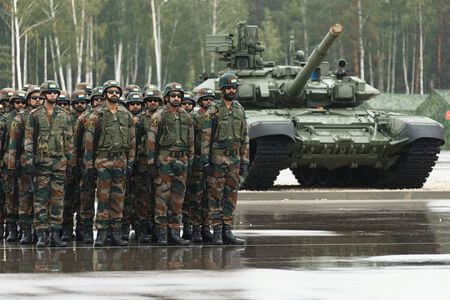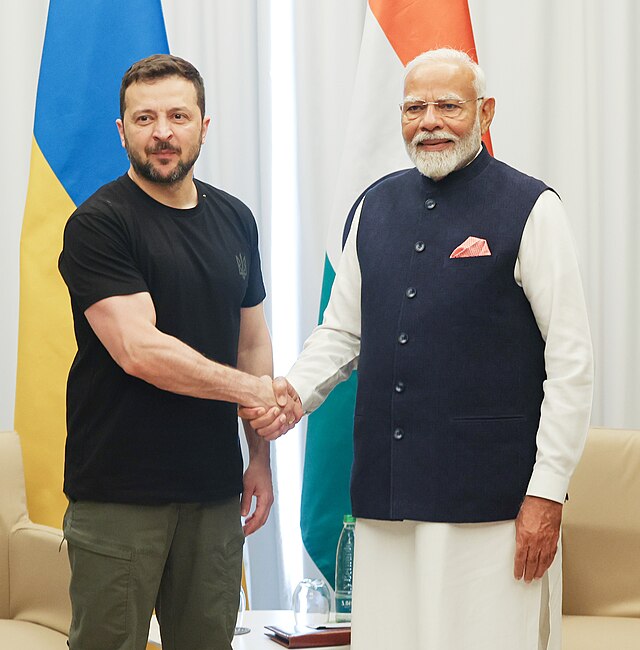
Including Arthashastra and The Bhagavad Gita for Indian Military Training – Salience of India’s Strategic Roots

Prime Minister Narendra Modi’s call for enhancing indigenisation in the national security system, not just in sourcing equipment and weapons but also in the doctrines, procedures and customs practiced in the armed forces in March this year is a reassertion of the government’s efforts to integrate endogenous sources of knowledge within the framework of national security policy making. The recent idea to include Kautilya’s Arthashastra and Bhagavad Gita as part of India’s military training appears to be in tandem with projects to study, evaluate and glean the enduring wisdom of ancient Indian texts, already underway in some of the premier defence institutions.
It is particularly heartening to see the Arthashastra being considered as part of regular training rather than dwelled upon ephemerally in sporadic lectures primarily focused on establishing its relevance in contemporary times. The important questions to ponder are why are these texts more significant than some others? Why is it important for India to tap its strategic roots, and why now? Why should this socialization be limited to the armed forces? Does this mean that the armed forces have so far been divorced from civilizational ethos? And whether this is the best way to bring about cultural rootedness, potentially critical for a harmonized vision of India’s national security goals.
Sanctity of the Ancient
The essence of a nation’s culture resides in the ‘native’ – vitally connected with the original inhabitants of a country. Ancient India and classical textual tradition, therefore, are key to India’s search for ‘pure’ essence. Strategic cultural theorists too aver that the ‘objects of analysis’ of a nation’s strategic culture are essentially strategic texts representative of a foundational period in the development of strategic thoughts and practices. The formative conceptualization of the external security environment (in terms of role of war, nature of adversary and utility of the use of force) along with a set of strategic preferences in dealing with it, acquires certain resilience, especially when the decision makers are shown to be adequately socialized and exhibiting these heuristics and preferences.
Kautilya’s Arthashastra is illustrative of a period 2300 years ago when for the first time a cohesive Indian geo-cultural space and the drive to establish a pan-Indian state/empire encompassing it, had existed. As the treatise is a compilation of precepts and principles of previous artha tradition and demonstrates affinity in thought-style with important texts of India’s larger strategic and philosophical tradition, it is eminently representative of ancient tradition of statecraft. Simultaneously, it is also perhaps, India’s chief historical military text signifying the role of the Army and its complementarity with other dimensions of state security, thereby setting it apart from military classics in other geographies.
The future lies in the past
But why should India revisit its past and rigorously draw lessons for contemporary statecraft from its strategic tradition? As India’s footprint on the world grows, she needs to be self-consciously aware of the values she represents. National security is about protecting a set of values from threat, and may mean different things for different people. The exact set of values, means of securing them, cost one is willing to bear, and the specific degree of security that the state is seeking to achieve, is bound to vary from state to state, and in a large measure then, becomes a function of its strategic culture. Universal, cross-cultural aspect of strategic thinking interacts with and integrates local cultural norms to arrive at principles of war making, lending distinctiveness to geo-cultural spaces.
As a nation’s approach to problem solving seemingly emanates from its cultural context, grasping the socio-cultural milieu of other states is equally important to fashion one’s own responses. For this reason, study of Thucydides, Clausewitz and Sun Tzu is significant. But what is equally if not more important is to have the knowledge of our own strategic traditions and the uniquely Indian way of war, in part also to understand how India is perceived by her allies and adversaries.
Kautilya and the armed forces
The armed forces as an important component of the national security structure do need to be adequately socialized. What are India’s national security goals and what are the preferred means to secure them need to be clearly spelled out and internalized. But if cultures are enduring with subliminal, latent influences, a state’s military too can’t be divorced from cultural and political norms of the society from which it draws its people. They should represent native proclivities and orientations even without structured socialization.
Let’s examine Indian Army’s ‘Land Warfare Doctrine’, 2018. The document comprehensively alludes to Kautilyan principles without making a direct attribution. Ironically, the conscious inclusion of a Chanakya quote is the least Kautilyan of its contents. The primary approach to resolve disputes in an ‘amicable manner’, employment of a mix of ‘politico-diplomatic initiatives’ backed by simultaneous military preparedness, weighing options based on capabilities, hybrid wars, importance of internal security along with external aggression, principles of ‘operational art and manoeuvre warfare’, information and psychological warfare, and the general understanding that elements of the military arsenal in conjunction with other elements of comprehensive national power constitute a nation’s grand strategy, are vibrant Kautilyan themes. Therefore, the past incorporated through primary socialization arguably may be more impactful and substantial than the symbols of its manifest presence, in representative forms like street names, pen names, comics and the Chanakya metaphor for a cunning statesman.
But this does not dilute the effectiveness of the exercise being discussed. A formal study of the ancient texts is important to merge the latent with the manifest, to have a more self-aware thinking on issues of national security. Perhaps, an introduction of these ‘value ideas’ at an early stage may work better for their absorption and operationalization.
A comprehensive approach
Kautilya’s idea of comprehensive statecraft is as much about armed might as it is about benign rulership, good counsel, productive resources and economic wealth. Therefore, the salience of these ancient texts, where security is defined in holistic terms, extends beyond the realm of military personnel to political leaders, diplomats, civil servants and public policy framers, in general.
The whole (body politic) inheres in its parts (seven limbs or saptanga) and the latter are both individually and collectively responsible for efficient statecraft. A true homage to the ancient strategic thinker would be a comprehensive approach towards ‘Indianization’ rather than a selective one.
***********************
Disclaimer
The opinions expressed in this article are the author’s own and do not reflect the views of Chanakya Forum. All information provided in this article including timeliness, completeness, accuracy, suitability or validity of information referenced therein, is the sole responsibility of the author. www.chanakyaforum.com does not assume any responsibility for the same.
Chanakya Forum is now on . Click here to join our channel (@ChanakyaForum) and stay updated with the latest headlines and articles.
Important
We work round the clock to bring you the finest articles and updates from around the world. There is a team that works tirelessly to ensure that you have a seamless reading experience. But all this costs money. Please support us so that we keep doing what we do best. Happy Reading
Support Us





















POST COMMENTS (12)
Ankit Kumar
Col A Asthana
Roshan Raghunathan
Alka Kumar
Col Prabir Sengupta, VSM
Col A Asthana
Balakrishna Gopinath
Col JP Singh
reply to col A Asthana
Col A Asthana
Col A Asthana
Lt Col Rajnikant Tiwari